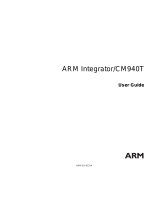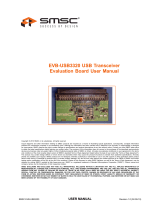Renesas DEV5X1503 family of MicroClock devices are designed to support 2.5 Volt power-supply applications. The standard 5X1503 includes an internal oscillator and can operate from 50MHz - 130MHz with output swing control. The 5X1503L uses an external crystal oscillator and can also operate from 50MHz - 130MHz. Spread spectrum modulation is available on 5X1503S and 5L1503S models only and can be utilized in high EMI applications or for reducing system jitter when using multiple clocks.
Renesas DEV5X1503 family of MicroClock devices are designed to support 2.5 Volt power-supply applications. The standard 5X1503 includes an internal oscillator and can operate from 50MHz - 130MHz with output swing control. The 5X1503L uses an external crystal oscillator and can also operate from 50MHz - 130MHz. Spread spectrum modulation is available on 5X1503S and 5L1503S models only and can be utilized in high EMI applications or for reducing system jitter when using multiple clocks.














-
 1
1
-
 2
2
-
 3
3
-
 4
4
-
 5
5
-
 6
6
-
 7
7
-
 8
8
-
 9
9
-
 10
10
-
 11
11
-
 12
12
-
 13
13
-
 14
14
Renesas DEV5X1503 User manual
- Type
- User manual
- This manual is also suitable for
Renesas DEV5X1503 family of MicroClock devices are designed to support 2.5 Volt power-supply applications. The standard 5X1503 includes an internal oscillator and can operate from 50MHz - 130MHz with output swing control. The 5X1503L uses an external crystal oscillator and can also operate from 50MHz - 130MHz. Spread spectrum modulation is available on 5X1503S and 5L1503S models only and can be utilized in high EMI applications or for reducing system jitter when using multiple clocks.
Ask a question and I''ll find the answer in the document
Finding information in a document is now easier with AI
Related papers
-
Renesas DEV5L1503 Operating instructions
-
Renesas DEV5X2503 Operating instructions
-
Renesas EVK5X2503 Operating instructions
-
Renesas EVK5X2503 User manual
-
Renesas EVK9FGV1006 User manual
-
Renesas EVK-8T49N1012 User manual
-
Renesas EVK9ZXL1951D User manual
-
Renesas ISL9230EVAL1Z Operating instructions
-
Renesas SDAWIR-4532-01 Operating instructions
-
Renesas ISL85003ADEMO1Z Operating instructions
Other documents
-
Fimer Solar Inverter Installation guide
-
ON Semiconductor NB3V63143G User manual
-
 ARM CM940T User manual
ARM CM940T User manual
-
Analog Devices WVGA/LCD EI3 User manual
-
Microchip Technology EVB-USB7056 User manual
-
 SMSC EVB-USB3320 User manual
SMSC EVB-USB3320 User manual
-
Microchip Technology ATSAMA5D2-ICP User manual
-
Silicon Labs Si5326-VTSS-EVB User guide
-
Silicon Labs Si535x-B20QFN-EVB User guide
-
Silicon Labs Si5391 Reference guide















